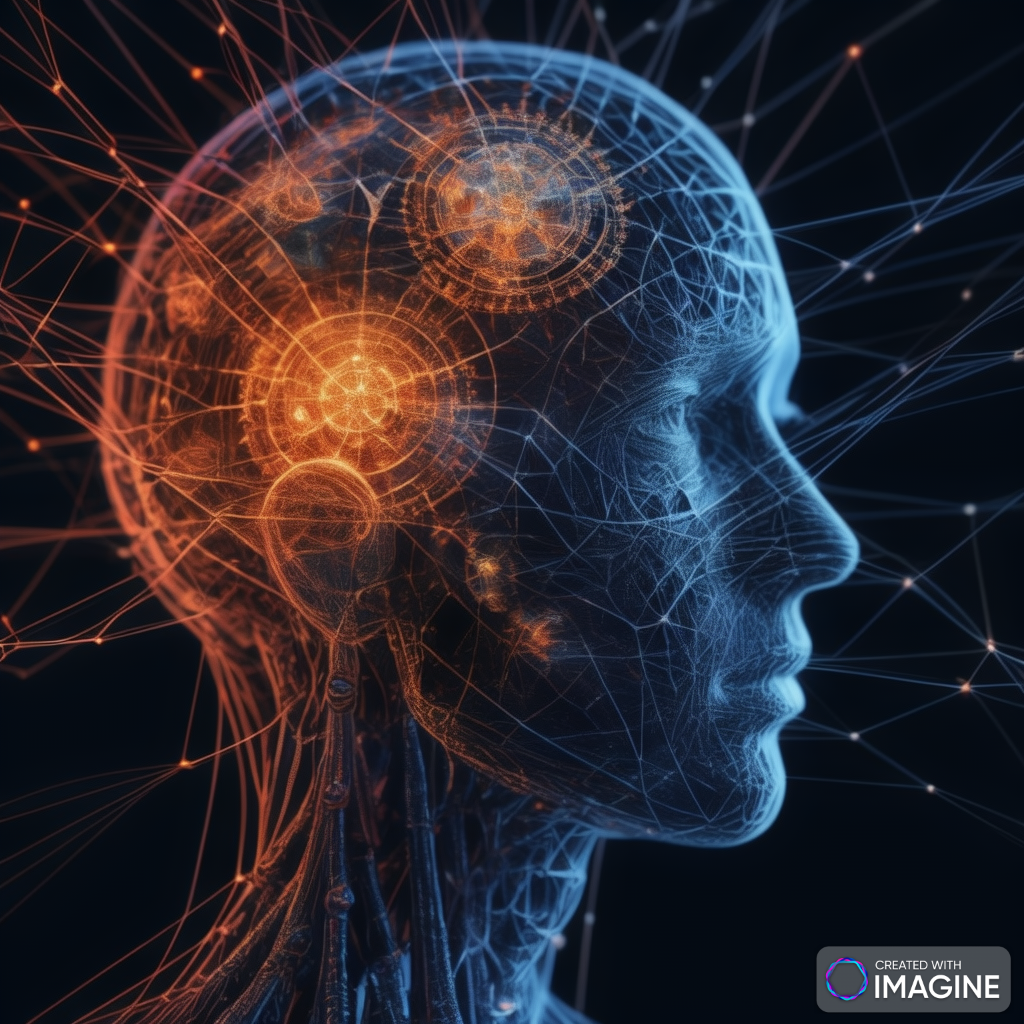Introduction: In the vast realm of Role-Constrained Artificial Intelligence , the design of intelligent agents plays a pivotal role in shaping their capabilities. One fascinating aspect of agent design is the incorporation of role constraints, a mechanism that profoundly influences the agent’s ability to handle explicit knowledge representations and engage in sophisticated reasoning. In this blog post, we will explore how role constraints contribute to the enhancement of explicit knowledge representations and reasoning in AI.
Role Constraints Demystified: At its core, a role constraint is a set of limitations and permissions assigned to an agent based on its designated role within a system. These constraints guide the agent’s interactions, decision-making processes, and knowledge utilization, ultimately shaping its behavior.
- Explicit Knowledge Representations:
- Defining the Knowledge Landscape: Role constraints act as the architects of an agent’s knowledge landscape. By delineating the permissible knowledge structures, these constraints provide a structured framework for the representation of explicit knowledge.
- Enhancing Clarity and Precision: With the aid of role constraints, agents can create well-defined representations of knowledge, minimizing ambiguity and enhancing the precision of information processing.
- Reasoning Capabilities:
- Guiding Decision-Making Processes: Role constraints serve as guiding principles for decision-making within the AI system. Agents, bound by their roles, engage in reasoning processes that align with their designated functions and responsibilities.
- Facilitating Informed Choices: By adhering to role-specific constraints, agents can make informed choices based on their designated roles, leading to more contextually relevant and purposeful reasoning.
- Adaptability and Learning:
- Dynamic Role Adjustments: Role constraints are not static; they can be adapted and modified based on learning experiences. Agents, through continuous learning, can refine their roles, leading to more adaptive and responsive behavior.
- Strategic Role Evolution: As agents accumulate knowledge, role constraints play a crucial role in shaping their evolution. The dynamic interplay between explicit knowledge representations and evolving role constraints enhances the agent’s strategic decision-making capabilities.
- Real-World Applications:
- Enterprise Systems: In complex enterprise systems, role-constrained AI agents excel at managing explicit knowledge related to user roles, permissions, and organizational hierarchies.
- Healthcare Systems: Role-constrained agents in healthcare settings ensure that explicit medical knowledge is utilized responsibly, respecting the roles of healthcare professionals and safeguarding patient information.
Expanding on the role of role constraints in shaping explicit knowledge representations and reasoning in artificial intelligence:
- Knowledge Integration Across Domains:
- Cross-Domain Expertise: Role constraints enable AI agents to navigate and integrate knowledge across diverse domains. By defining the scope of expertise within specific roles, agents can amalgamate insights from various fields, contributing to a holistic understanding of complex scenarios.
- Collaborative Decision-Making:
- Role-Based Collaboration: In scenarios where multiple AI agents collaborate, role constraints facilitate seamless cooperation. Each agent, guided by its role, contributes to decision-making processes, ensuring that the collective intelligence aligns with predefined roles and responsibilities.
- Ethical and Responsible AI:
- Embedding Ethical Guidelines: Role constraints serve as a mechanism to embed ethical considerations into AI systems. Agents, constrained by roles with predefined ethical guidelines, make decisions that align with moral principles, fostering responsible AI practices.
- Contextual Adaptation:
- Context-Aware Decision-Making: Role constraints equip AI agents with the ability to adapt their reasoning based on the contextual nuances of a situation. This adaptability ensures that explicit knowledge is applied judiciously, considering the specific circumstances within the defined roles.
- Enhanced Security Measures:
- Role-Based Access Control (RBAC): Role constraints play a crucial role in RBAC systems, where access to information is restricted based on predefined roles. This enhances security by preventing unauthorized access and ensuring that explicit knowledge is accessible only to those with the requisite roles.
- Continuous Learning and Evolution:
- Role Refinement Through Learning: AI agents, bound by role constraints, engage in continuous learning. As they accumulate new knowledge, role constraints may evolve, allowing agents to refine their roles dynamically and adapt to emerging challenges.
- Interplay with Explainability:
- Transparent Decision-Making: Role-constrained AI contributes to explainable AI practices. The alignment of explicit knowledge representations with role-based reasoning allows for transparent decision-making, where the rationale behind AI actions can be easily understood and interpreted.
- Regulatory Compliance:
- Role Constraints for Compliance: In regulated industries, AI systems must adhere to specific guidelines and regulations. Role constraints facilitate compliance by ensuring that AI agents operate within the legal and regulatory boundaries defined for their roles.
- Human-AI Collaboration:
- Harmonizing Human and AI Roles: In collaborative settings involving humans and AI, role constraints harmonize the roles of both entities. This fosters effective collaboration, leveraging the strengths of each, and ensuring that explicit knowledge is used synergistically to achieve common goals.
- Feedback Loops and Performance Optimization:
- Learning from Feedback: Role-constrained AI systems can utilize feedback loops to enhance performance. By incorporating feedback within the scope of role constraints, agents can adapt their knowledge representations and reasoning strategies for continuous optimization.
- Semantic Understanding and Natural Language Processing:
- Role-Driven Language Processing: Role constraints contribute to the semantic understanding of language within AI systems. By aligning language processing with specific roles, agents can interpret and generate content in a manner that is contextually relevant to their designated functions.
- Temporal Reasoning and Dynamic Environments:
- Role Constraints in Dynamic Scenarios: In dynamic environments where information evolves over time, role constraints enable AI agents to engage in temporal reasoning. Agents can adapt their explicit knowledge representations and reasoning strategies to suit the evolving nature of their roles.
- Adversarial Robustness:
- Role-Based Security Measures: Role constraints bolster adversarial robustness in AI systems. By restricting access and decision-making based on predefined roles, agents become less susceptible to adversarial attacks, enhancing the overall security posture of the system.
- Hierarchical Role Structures:
- Layered Role Hierarchy: Complex AI systems may incorporate hierarchical role structures. This allows for layered decision-making and knowledge representation, with roles at different levels of hierarchy influencing the system’s behavior in a coordinated manner.
- Resource Allocation and Optimization:
- Efficient Resource Utilization: Role constraints play a role in optimizing resource allocation within AI systems. Agents, adhering to their roles, can prioritize and allocate computational resources efficiently, ensuring that explicit knowledge is processed in a manner that aligns with system goals.
- Cognitive Workload Management:
- Balancing Cognitive Loads: AI agents, when designed with role constraints, can manage cognitive workloads effectively. Roles help distribute cognitive responsibilities, preventing information overload and ensuring that explicit knowledge is processed with a balanced cognitive load.
- Crisis Response and Decision Support:
- Role-Based Crisis Management: In crisis scenarios, role-constrained AI systems excel in decision support. Roles define specific responsibilities during emergencies, guiding the agents in processing explicit knowledge swiftly and making informed decisions under pressure.
- Inter-Agent Communication and Coordination:
- Role-Driven Communication Protocols: In multi-agent systems, role constraints facilitate effective communication and coordination. Agents, each with a defined role, communicate within prescribed protocols, ensuring that explicit knowledge is shared and acted upon in a coordinated fashion.
- Evolutionary Algorithms and Role Dynamics:
- Role Evolution in Evolutionary Algorithms: In AI systems employing evolutionary algorithms, role constraints can influence the evolution of roles over time. This dynamic role adaptation enhances the system’s ability to navigate complex problem spaces.
- Humanization of AI Interactions:
- Role Constraints for User-Friendly Interactions: When AI systems interact with humans, role constraints contribute to a more humanized experience. The system’s behavior aligns with predefined roles, making interactions more intuitive and user-friendly.
- Transfer Learning Across Roles:
- Knowledge Transferability: Role constraints support transfer learning across different roles. Knowledge acquired in one role can be leveraged and transferred to another, fostering a more versatile and adaptable AI system.
- Neurosymbolic Integration:
- Blending Symbolic Reasoning with Neural Networks: Role constraints play a crucial role in neurosymbolic integration. By defining roles that balance symbolic reasoning and neural network-based learning, AI systems can harness the strengths of both paradigms.
- Role-Based System Maintenance:
- Maintenance and Updates: Role constraints guide system maintenance activities. When updates or modifications are necessary, roles provide a structured framework for ensuring that explicit knowledge representations and reasoning strategies remain aligned with the system’s goals.
Conclusion: The integration of role constraints into the design of AI agents represents a sophisticated approach to harnessing explicit knowledge representations and reasoning. As we delve deeper into the intricate web of AI development, understanding the nuanced role of constraints becomes essential for creating intelligent systems that navigate the complexities of explicit knowledge with finesse. The synergy between role constraints, explicit knowledge, and reasoning stands as a testament to the evolving landscape of AI, promising advancements that transcend traditional boundaries.






